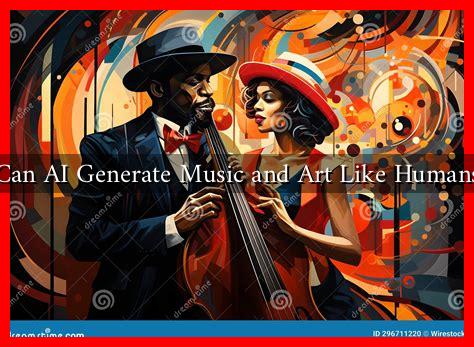-
Table of Contents
Can AI Generate Music and Art Like Humans?
Artificial Intelligence (AI) has made significant strides in recent years, particularly in the creative fields of music and art. As technology continues to evolve, the question arises: can AI truly generate music and art that rivals human creativity? This article explores the capabilities of AI in these domains, examining its potential, limitations, and the implications for artists and audiences alike.
The Rise of AI in Creative Fields
AI’s foray into music and art is not a recent phenomenon. However, advancements in machine learning and neural networks have propelled this technology into the spotlight. AI systems can now analyze vast datasets of existing music and art, learning patterns and styles to create original works. Some notable examples include:
- AIVA (Artificial Intelligence Virtual Artist): AIVA is an AI composer that creates classical music. It has been used in film scores and video games, showcasing its ability to produce emotionally resonant compositions.
- DeepArt: This AI tool transforms photographs into artworks by mimicking the styles of famous artists like Van Gogh and Picasso, demonstrating how AI can reinterpret visual art.
- OpenAI’s MuseNet: MuseNet is capable of generating music in various genres, from classical to jazz, and can even combine styles, producing unique compositions that reflect a blend of influences.
How AI Creates Music and Art
AI generates music and art through complex algorithms and models that analyze existing works. Here’s a brief overview of the processes involved:
- Data Collection: AI systems require extensive datasets to learn from. For music, this includes audio files, sheet music, and metadata. For art, it involves images, styles, and techniques.
- Machine Learning: Using techniques like deep learning, AI models identify patterns and structures within the data. This allows them to understand the nuances of composition and style.
- Generation: Once trained, AI can generate new pieces by combining learned elements in innovative ways, often producing results that are surprising and original.
Limitations of AI in Creativity
Despite its impressive capabilities, AI-generated music and art have limitations that set them apart from human creations:
- Lack of Emotional Depth: While AI can mimic styles and structures, it often lacks the emotional depth and personal experiences that human artists infuse into their work.
- Originality Concerns: AI-generated works can sometimes feel derivative, as they are based on existing data. Critics argue that true creativity involves the ability to innovate beyond learned patterns.
- Contextual Understanding: AI struggles with cultural and contextual nuances that inform human creativity. This can lead to works that, while technically proficient, may miss the mark in terms of meaning or relevance.
Case Studies: AI in Action
Several case studies illustrate the impact of AI on music and art:
- “Hello World” by Taryn Southern: This album, co-created with AI, showcases how technology can enhance human creativity. Southern collaborated with AI to compose and produce tracks, blending her artistic vision with AI’s capabilities.
- “Edmond de Belamy”: This portrait, created by the Paris-based art collective Obvious using GAN (Generative Adversarial Networks), sold for $432,500 at auction, raising questions about authorship and the value of AI-generated art.
The Future of AI in Music and Art
The future of AI in creative fields is promising yet complex. As technology continues to advance, we may see:
- Collaborative Projects: More artists may collaborate with AI, using it as a tool to enhance their creative processes rather than replace them.
- New Genres and Styles: AI could lead to the emergence of entirely new genres of music and art, pushing the boundaries of what is considered creative expression.
- Ethical Considerations: As AI-generated works gain popularity, discussions around copyright, ownership, and the definition of creativity will become increasingly important.
Conclusion
AI has undoubtedly made significant strides in generating music and art, showcasing its potential to complement human creativity. While it can produce impressive works, the emotional depth and contextual understanding inherent in human artistry remain challenging for AI to replicate. As we move forward, the collaboration between AI and human artists may redefine the creative landscape, leading to innovative expressions that blend technology with human experience. The journey of AI in the arts is just beginning, and its implications will continue to unfold in fascinating ways.
For more insights into the intersection of technology and creativity, visit MIT Technology Review.


